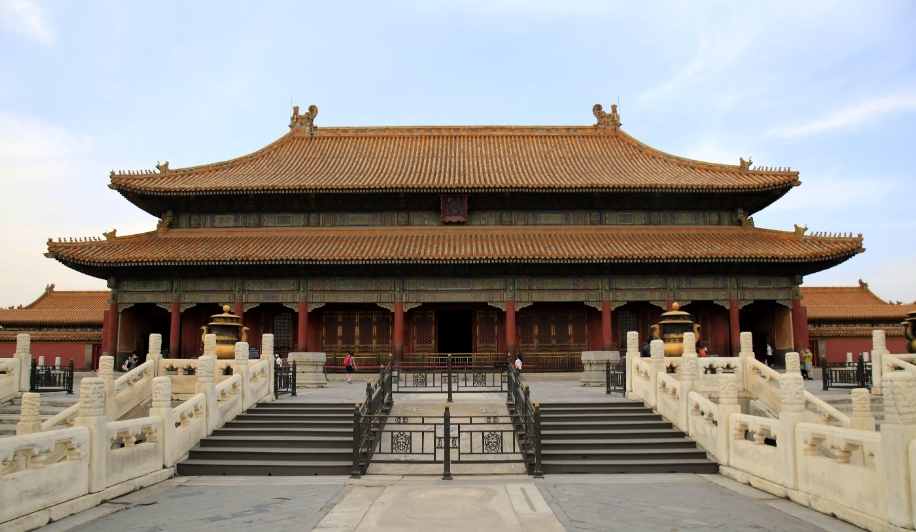
Why is the Forbidden City Red?
Stepping into the Forbidden City, one is immediately struck by a sea of red. This vibrant color washes over the grand palaces, majestic gates, and intricate decorations, creating an ambiance of power and majesty. But why is red so prominent in this iconic landmark? The answer lies in a fascinating tapestry of history, culture, and tradition.
Red: The Color of Auspicious Beginnings
In Chinese culture, red isn't just a color – it's a symbol brimming with positive connotations. For centuries, it has been associated with:
- Power and Authority: Red was historically the color of emperors and royalty, representing their supreme status and command. This symbolism is deeply ingrained in Chinese consciousness, making red an immediate visual cue for authority and power.
- Happiness and Prosperity: Red is believed to attract good fortune, prosperity, and happiness. It is a color used extensively in celebrations, festivals, and auspicious occasions like weddings and New Year, infusing them with joy and auspicious energy.
- Wealth and Good Luck: The color red is linked to wealth and financial success. This connection is evident in traditional red envelopes filled with money, gifted during Lunar New Year and special occasions to bestow good luck and prosperity.
- Honor and Respect: Red embodies honor, respect, and high social standing. It is used to signify respect for elders, ancestors, and deities, signifying reverence and admiration.
The Forbidden City: A Canvas of Imperial Power
The Forbidden City, as the imperial palace of the Ming and Qing dynasties, served as the epicenter of power and authority for over 500 years. The choice of red as the dominant color was far from arbitrary. It served to:
- Project Imperial Authority: The overwhelming presence of red throughout the complex served as a constant visual reminder of the emperor's absolute power and divine mandate to rule.
- Invoke Auspicious Energy: By incorporating red, the builders aimed to attract positive energy, good fortune, and prosperity to the emperor and the entire nation. This belief in the color's power to influence destiny was deeply rooted in Chinese culture.
- Create an Aura of Grandeur: The use of red on such a grand scale created a visually stunning and awe-inspiring effect, emphasizing the magnificence and splendor of the imperial court. It served as a powerful symbol of the dynasty's wealth, sophistication, and cultural dominance.
Beyond the Walls: Red in Chinese Culture
The significance of red extends far beyond the Forbidden City walls, permeating various aspects of Chinese culture:
- Traditional Clothing: Red is a favored color for traditional attire, particularly for festive occasions and weddings.
- Decorative Arts: From intricate paper cuttings to elaborate lacquerware, red is a dominant hue, adding vibrancy and auspicious symbolism to these art forms.
- Language and Idioms: The color red is woven into the fabric of the Chinese language, with numerous idioms and expressions using it to convey good fortune, happiness, and success.
A Timeless Symbol in a Modern World
Today, the Forbidden City stands as a testament to the enduring power of color symbolism. Its vibrant red hues continue to captivate visitors, offering a glimpse into a rich cultural tapestry where color transcends mere aesthetics to embody profound meaning and belief.
FAQs
1. Why is red considered lucky in Chinese culture?
Red is associated with fire, which is believed to ward off evil spirits and bring good luck. It is also the color of the sun, symbolizing life, energy, and prosperity.
2. Was the Forbidden City always red?
While red has always been the dominant color, the Forbidden City has undergone numerous renovations and restorations throughout its history. The intensity and shade of red may have varied slightly over time.
3. Are there any other colors used in the Forbidden City and what do they symbolize?
Yes, while red is dominant, other colors are incorporated strategically. Yellow, representing the earth and imperial authority, is often used for roofs. Green, symbolizing growth and harmony, is found in gardens and decorations. Blue, associated with the heavens, is used for roof tiles. Each color plays a specific role in the overall symbolism and design of the complex.
note: This return of all, without the author's permission, may not be reproduced